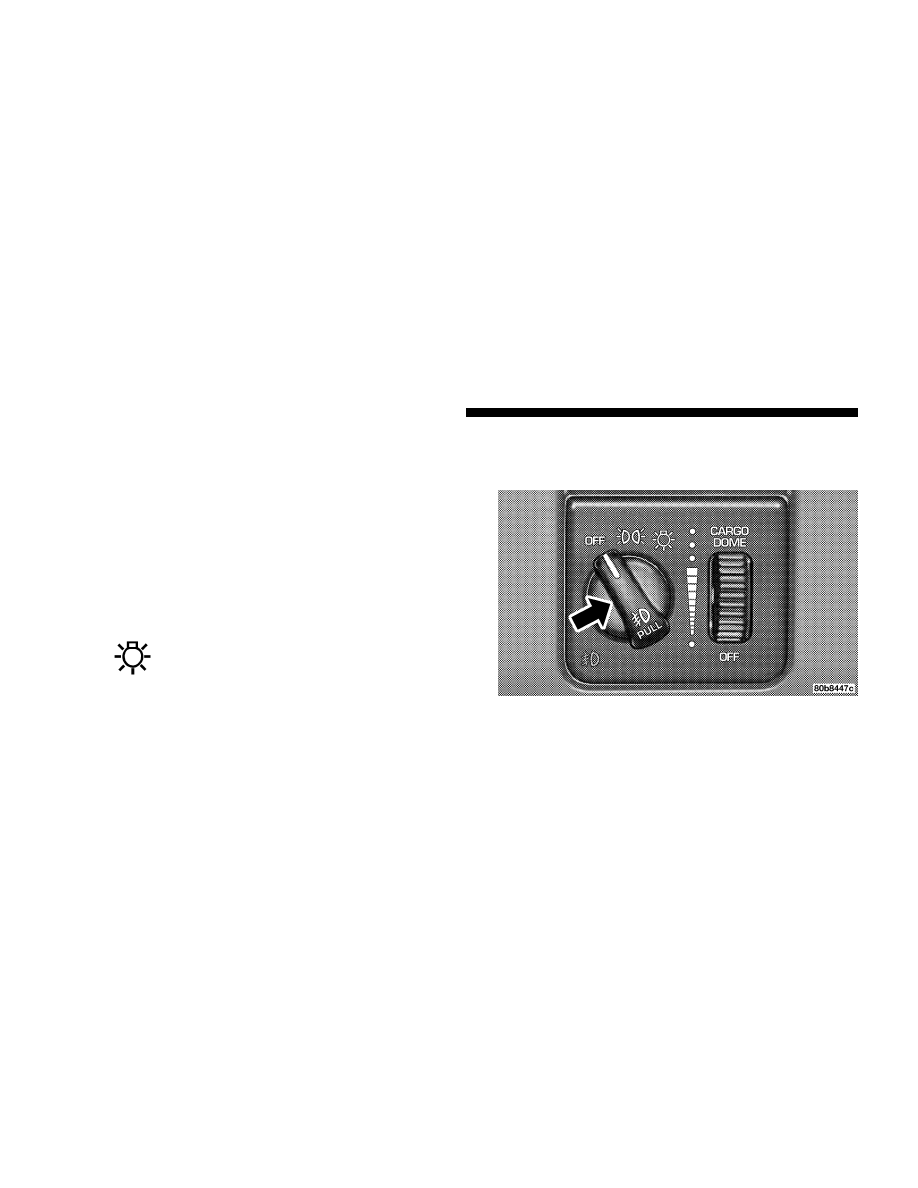Dodge 2500 Diesel (2005 year). Manual - part 8

Headlamp Delay — If Equipped
To aid in your exit, your vehicle, if equipped, can be
programmed by your dealer with a headlamp delay that
will leave the headlamps on for 0, 30, 60, or 90 seconds.
This delay is initiated when the ignition is turned OFF
while the headlamp switch is on, and then the headlamp
switch is cycled off. The headlamps will remain on for 60
seconds. Headlamp delay can be cancelled by either
turning the headlamp switch ON then OFF or by turning
the ignition ON.
Headlights, Parking Lights, Panel Lights
When the headlight switch is rotated to the first
position, the parking lights, taillights, side marker
lights, license plate light and instrument panel
lights are all turned on. Rotating the headlight switch to
the first position will also turn on the cab top clearance
lights, flare lights, and tailgate lights if the vehicle is
equipped with these lights. The headlights will turn ON
when the switch is rotated to the second position. The
⬙LAMP OUT⬙ indicator will be illuminated in the instru-
ment cluster if a defective bulb or wiring circuit is
detected for the headlamp system.
Your vehicle is equipped with plastic headlight lenses
that are lighter and less susceptible to stone breakage
than glass headlights.
116
UNDERSTANDING THE FEATURES OF YOUR VEHICLE